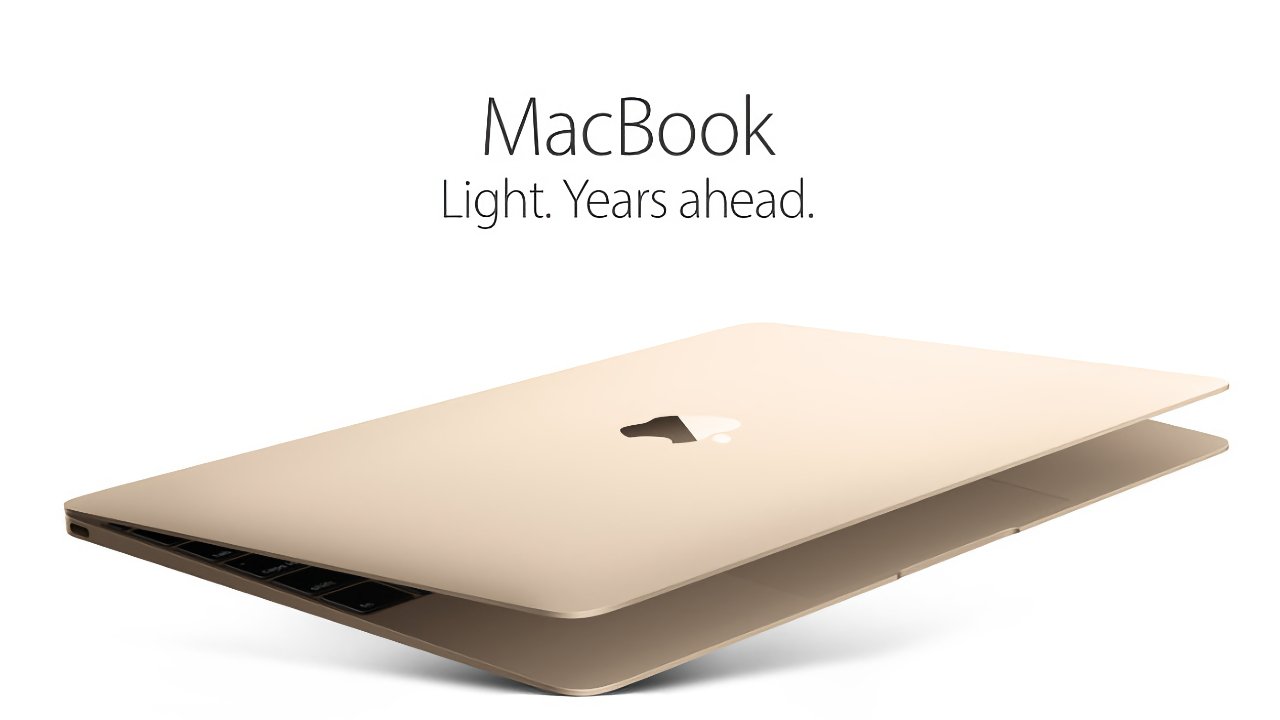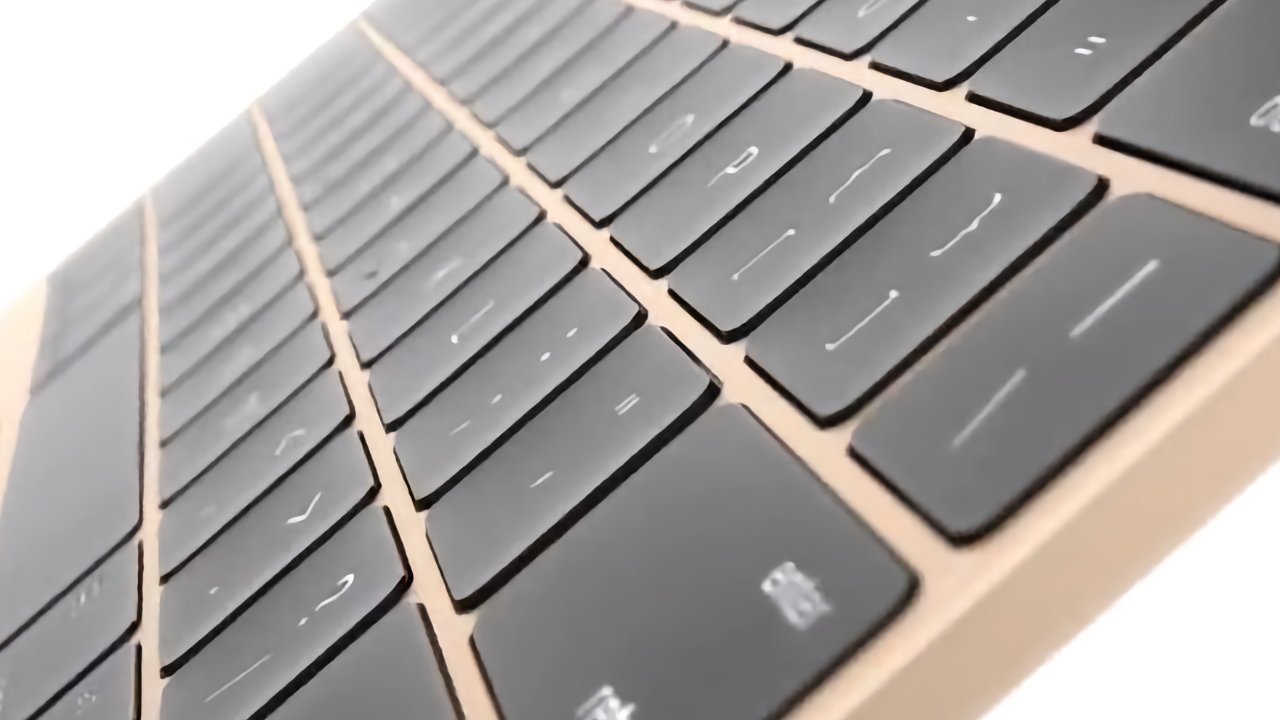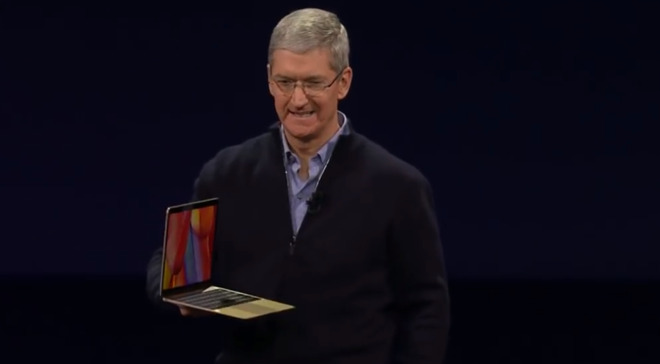The $599 MacBook rumor is persistent, but seems more likely than ever
Rumors of a low-cost MacBook have circulated since before there were even MacBooks, but the latest reports have made a strong case for Apple finally making one -- and it would be such a huge hit.

Apple's 2015 MacBook came to be called the MacBook Adorable -- image credit: Apple
Right at the very start of developing the Macintosh in the early 1980s, Steve Jobs famously stated that the ambition was "Mac in a book in five years." He wasn't enormously far out, with the PowerBook 100 launching in 1991 -- and what he renamed the MacBook Pro in 2006.
If there were ever a stated ambition to make a low-cost MacBook, it wasn't made as public as the plans for a low-cost Macintosh were back in 1984. From 1991 to 2025, you could call a laptop Mac value for money, but you couldn't call it low cost.
Not even the stripped down 2015 MacBook was low cost, as it started at $1,299 -- and the new rumors say Apple will release one for $599.
The latest rumors are likely to be true
You can take your pick about rumors of a low-cost MacBook -- here's one from 2018, and another from 2015 -- but if those rumors were even remotely true, the device Apple released was never really low-cost.
This time the rumors have more weight and that's not just because analyst Ming-Chi Kuo has predicted a 2026 release date for a $599 MacBook. It's also not just because Digitimes has claimed to have sources in the supply chain backing up the idea.
Instead, those predictions and reported claims come after code references being spotted in macOS Sequoia in July 2024, although their importance wasn't appreciated until much later.
Plus, there's finally some rationale behind Apple producing a lower-cost MacBook instead of just users -- and perhaps Apple itself -- hoping it will. Central to all of the rumors of a $599 MacBook is that it would run on an iPhone-style A18 Pro processor.
Apple has already gone the other way and put what was believed to be a Mac processor into the iPad Pro. And an iPhone-style A18 Pro processor is less complex than an M-series one, and smaller, so it's cheaper to produce.

The 2015 MacBook was adorable despite being the model that introduced the failed butterfly keyboard -- image credit: Apple
If Apple can get the production cost down, then it has other issues such as cannibalizing sales from its MacBook Air range. That's currently the lowest-cost MacBook that Apple sells, and at time of writing, you can buy an M4 MacBook Air at Amazon for $799 ($200 off).
Plus, as of late, the closeout M1 MacBook Air has reached the same $599 price at Walmart that is so hoped-for with the rumored new machine. That doesn't appear to have markedly caused Apple any problems, and probably for the same reason a new design at this price wouldn't prompt cannibalizing.
Chip performance woes aren't a real problem
The use of an A18 is not just smart from a price standpoint. It's also reasonable when you take into account the actual specifications of the chip, versus the M-series Apple Silicon it would presumably replace.
| Chip | A18 | M1 | M4 |
|---|---|---|---|
| CPU Cores | 6 cores: 2 performance, 4 efficiency | 8 cores: 4 performance, 4 efficiency | 10 cores: 4 performance, 6 efficiency |
| GPU Cores | 5 cores | 7 or 8 cores | 10 cores |
| Clock Speed | 4.0GHz | 3.2GHz | 4.4GHz |
| Geekbench Single-core | 3,318 | 2,365 | 3,830 |
| Geekbench Multi-core | 8,191 | 8,438 | 14,546 |
| Geekbench Metal | 26,620 | 31,289 | 55,427 |
The numbers are pretty clear when you compare the A18 to the M1 and M4 for a daily driver for a casual user.
Yes, the A18 is a chip from 2024 versus the M1 from 2020. The four-year engineering difference is apparent.
The A18 has less to work with, having six total CPU cores, split into just two performance cores and four efficiency cores. The M1 has four each of the performance and efficiency cores, and the modern M4 has ten cores: four performance, six efficiency.
It's a similar story for the GPU, with the A18 having five cores, the M1 using seven or eight, and the M4 having 10 cores.
Some of this is explained by Apple needing to deal with the thermal management needs of the iPhone. The thermal profile of the MacBook Air isn't that much different than the iPhone, of course, so its likely to be even more similar in a $599 MacBook.

Geekbench single-core results
Looking at it through Geekbench tests, you can see the battle is a lot closer than you would expect. For the single-core test, the higher clock speed of the A18 helps it get close to the M4, but crucially much better than the M1.
The multi-core test is a lot closer, with the A18 narrowly pipped by the M1 with 8,191 versus 8,438. The higher core count and clock speed of the M4 outpaces the two at over 14,500.

Geekbench multi-core results
Then there's Metal, the graphical capability.

Geekbench Metal results
Despite having a two or three-core deficit, or a 29% to 37% reduction in GPU cores to use, the A18 still manages to do really well. The 26,620 of the A18 is just under 15% behind the M1's 31,289.
The core count deficit isn't quite closed up by performance gains, but the A18 certainly gives the M1 a run for its money.
And, that single-core performance is what most casual users rely on the most.
It's about more than the price
Price is crucial, there's no doubt about that, but along with a lower cost and performance as we've discussed, this rumored new MacBook is expected to be lower everything. Fewer ports included.
Admittedly, this really only seemed to happen after the 2015 MacBook was cancelled, but that device did become known as the MacBook Adorable. It was genuinely adored and genuinely missed, but if you never used one, it's impossible to imagine why.
For that 2015 MacBook was slow and it came with the now infamous butterfly keyboard, whose failure upset users and ultimately made only lawyers happy.
However, if you did use one -- and if you didn't have any keyboard problems -- this MacBook was gorgeous. It felt tiny, it seemed powerful enough for writing on, it was the MacBook for coffee shops, and airplane flights, and student backpacks.
Apple has taken a big hit in the education market, but this still won't help
That last part may be the most significant, as Apple used to be incredibly strong in education, and now it simply isn't because Chromebooks are so much cheaper. That is a case of price driving sales, and it's also a case of people putting up with lower-specification machines to save a buck.
Apple used to put a lot of effort into getting into education because it knew what the long-term benefit was. People who used Apple devices when they were in school and college, would tend to be people who buy them for the rest of their careers.

Tim Cook unveils the MacBook in 2015. "Can you even see it?" he says.
That was worth whatever it cost Apple to do education discounts. But somewhere along the way, it stopped being economic to compete with Chromebooks and it's possible that Apple will never regain its former position.
Not with Chromebooks now available under $200, and iPads not even approaching that before mandatory bundling of educational materials, and AppleCare in some settings. If Apple is to get back into education, a $599 MacBook will still be too expensive to compete.
But despite some arguments we've seen leaning on education, that's not who this device would be for. It's a halo product for the iPhone, an inexpensive gateway into computing versus the computing appliance that is the iPhone.
Just like that 2015 MacBook.
Even with its lowest specifications and lowest performance, the 2015 MacBook was brilliantly made -- and it felt like a much more hard-wearing and even premium device.
Chromebooks are what you use when you have to. A $599 MacBook could be what you'd use because you wanted to.
If these latest rumors are true, it would also be this highly desirable device that costs half the price of that 2015 MacBook.
Read on AppleInsider

Comments
And, there are giant engineering parallels between A18 and M2, so in essence this is what you get.
I also wonder if there isn't a bit of iPhone 16e strategy here. Meaning: in the same way people were hanging onto their old iPhones because they couldn't justify the price for upgrading to a new, regular iPhone--and now the 16e has given them a way to do that a lower cost while still getting a brand new iPhone with most of the latest features--maybe it's the same for Macbooks. Casual users have ancient machines because they can't justify the price to upgrade to a new Macbook. but this will give them the chance to do that at a lower price point while still getting a new, "latest" model Macbook with all of the essential features they'll need.
A comment on the education part of the article. Education was Apple's segue into costumers minds. At school and at college. They don't need that now because every man and his dog have an iPhone now. Why hurt your margins on education discounts when you are making great margins on the iPhones you sell to the same segment.
This is a bit left field so don't slam me, but what if Apple made an internet only device like a Chromebook? No memory and access everything online. I wouldn't go for it myself but having a dumb terminal device in their portfolio may be a thing.
People need a good backlit keyboard, trackpad, battery, and the device must be solid. 16/256 seems to be the minimum for macOS. Perhaps 12/256.
What is left to cut? Processor and the cost of the display. It might even improve gaming performance.